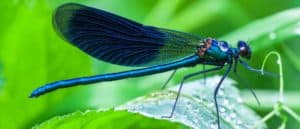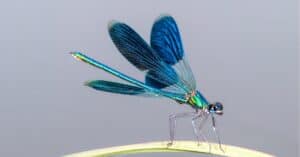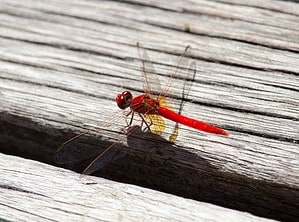There are currently over 7,000 dragonfly species in the world. With the exception of Antarctica, these flying insects are found everywhere on Earth. They reside close to bodies of water like lakes, ponds, marshes, and streams and in warm temperatures. With small bodies, thin wings, and an inconspicuous head, one may start to wonder; do dragonflies have teeth? Whether yes or no, we will learn just what makes a dragonfly’s mouth unique, what they eat, and how they hunt for food.
How To Identify Dragonflies
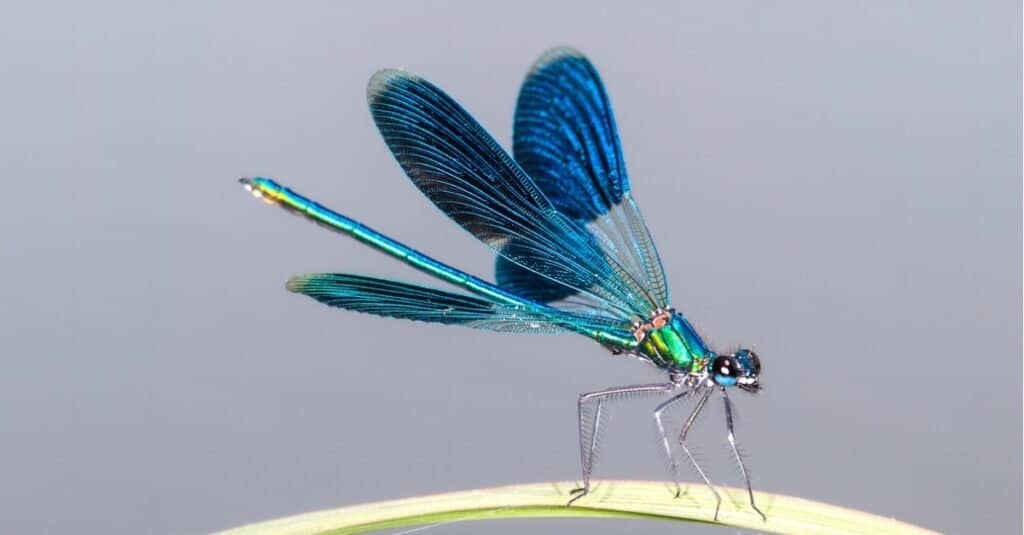
A dragonfly’s field of vision is 360 degrees, and almost all of its brain power is used to process images.
©iStock.com/MBadnjar
Adult dragonflies can be identified by their two sets of thin, vivid wings and small, needle-like bodies. It is easy to confuse dragonflies with the closely related damselflies, which belong to the Zygoptera suborder of order Odonata and have a similar body structure but are often lighter in build. However, damselflies have a weaker, fluttery flight, whereas dragonflies are swift fliers.
Dragonflies are excellent fliers. They are among the strongest fliers in the animal kingdom, and there are not many animals that can match this accomplishment. Their exceptional flying ability is due to the network of veins and membranes that make up their wings. They have incredible vision in addition to great flying skills. In actuality, their vision and the dragonfly’s amazing flying coordination go hand in hand. The combination of these two amazing skills makes these insects very skilled hunters.
Do Dragonflies Have Teeth?
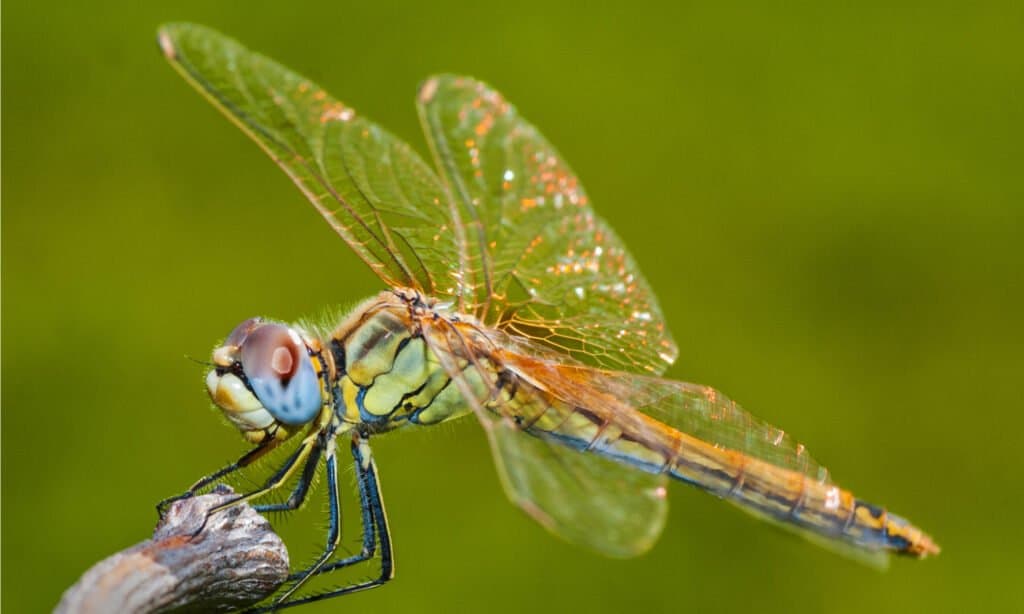
Dragonflies lack teeth but have mandibles with serrations that resemble teeth.
©kesipun/Shutterstock.com
Like all flies, dragonflies do not have teeth. Dragonflies lack true teeth, but they have extraordinarily big, sturdy mandibles with serrations that resemble teeth and are sharply pointed. Despite belonging to the order Odonata, which is Greek for “toothed,” dragonflies lack teeth.
The most anterior of the three pairs of oral appendages on an insect is a pair of appendages called mandibles that are located close to the mouth. Typically, their purpose is to grab, crush, or slash the insect’s meal or to protect it from rivals or predators. Contrary to vertebrates, whose mandibles appear to have evolved from gill arches and move vertically, insect mandibles appear to have evolved from legs and move in the horizontal plane. Moths and butterflies are major examples of such insects.
How Do Dragonflies Eat?
If dragonflies do not have teeth, then how do they eat? Dragonflies can pick up a bug with their legs and immediately put it in their mouths without pausing. Dragonflies also open their lips while flying to gather food, while others glean or collect the insects that are perched above plant stems and leaves. Young adults will consume caterpillars that are dangling from trees.
What Do Dragonflies Eat?
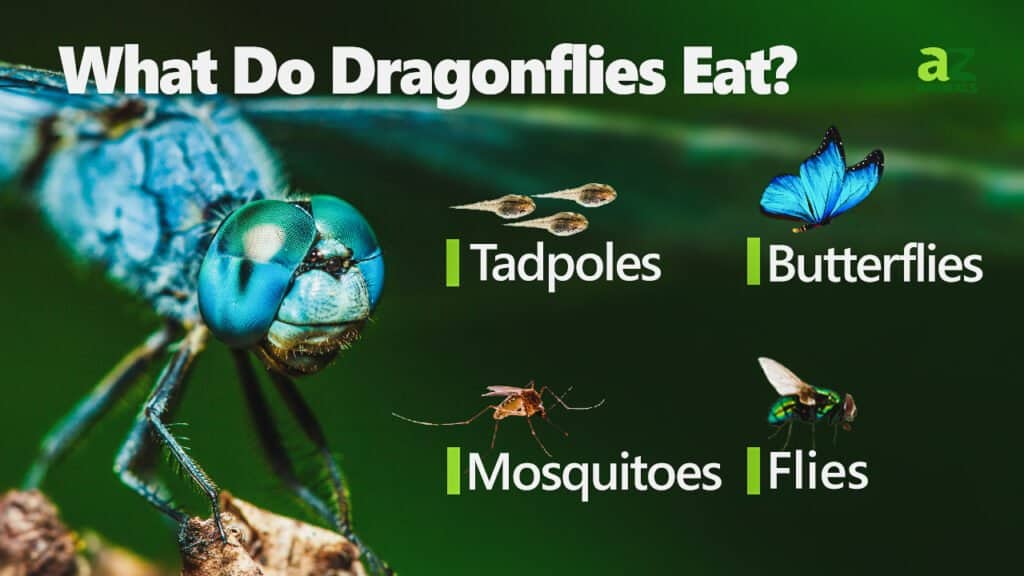
Dragonflies are entirely carnivorous, which means they consume other smaller animals and animal matter. Dragonflies generally eat anything smaller than them. If they have the chance, they would even hunt for smaller dragonflies because they are not picky eaters. Every day, the average dragonfly can consume up to a fifth of its total weight, and some can consume even more. As a result, they will consume almost everything they can catch. Their preferred sources of food are midges and mosquitoes. Numerous other insects, usually weaker and smaller ones, are part of their diet.
What Do Baby Dragonflies Eat?
Dragonflies go through numerous nymphal stages rather than a pupal stage before reaching adulthood. Their toothed mandibles can quickly extend forward, enabling them to capture prey. They enjoy eating bloodworms and insect larvae, among other things. That said, they will also eat small fish and tadpoles. Try feeding daphnia, often known as water fleas, to baby dragonflies if you’re rearing them. Mosquitoes and housefly larvae are also popular sources of food. Dragonfly larvae spend most of their time submerged in water. Nevertheless, certain species will also spend time on land, especially when feeding.
How Do Dragonflies Hunt For Food?
Like other insects, dragonflies cannot hear, so they must rely on their exceptional vision to hunt. They have enormous compound eyes with color and binocular vision. A dragonfly’s field of vision is 360 degrees, and almost all of its brain power is used to process images. They can actually see in slow motion since they can process around 300 images per second.
Although dragonflies’ movements seem completely random to us, these incredible insects actually hunt with purpose. It is interesting to note that different dragonfly species frequently employ various hunting techniques to obtain their prey, such as:
Gleaning
Gleaning is the process of hovering over leaves and other foliage to snag the insects roosting there. Other insects that are capable of gleaning include clubtail and damselfly species.
Hawking
Hawking is another technique used by dragonflies to capture their prey. This happens when dragonflies fly backward and forward to catch their prey as it passes by with their arms or mouths. It has also been shown that dragonflies have the ability to organize their attacks, foreseeing where their victims will move next and catching them.
Sallying
Species like skimmers use a technique called sallying. Dragonflies that use this method by perching and scanning the area for prey before swooping to seize it. Dragonflies that employ this tactic are recognized by the way they perch on a branch or leaf, dart quickly outside, and then perch again.
Up Next:
Dragonfly Lifespan: How Long Do Dragonflies Live?
The photo featured at the top of this post is © aaltair/Shutterstock.com
Sources
- National Parks Buzz, Available here: https://www.nparks.gov.sg/nparksbuzz/issue-19-vol-4-2013/conservation/the-secret-life-of-dragonfly-larvae
- The Dragonfly Website, Available here: https://dragonflywebsite.com/dragonfly-facts.cfm
- Nature north, Available here: http://www.naturenorth.com/dragonfly/DOM/Page07_Food.html
Thank you for reading! Have some feedback for us? Contact the AZ Animals editorial team.



